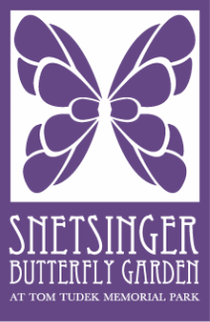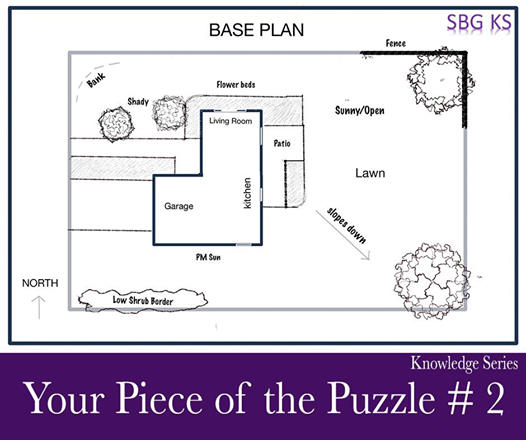Your Piece of the Puzzle #5 - Juggling Bubbles
If you’ve ever planned a Thanksgiving dinner, you know the challenges of juggling multiple considerations. The seasoned Thanksgiving host plans well in advance with lists of groceries, timings, and dietary needs. In the process of planning for your wildlife feast, you’ve already accomplished outlining your needs, making an inventory, and noting existing conditions in your base plan.
Let’s now evaluate the plan to see how effective it is as wildlife habitat. An easy way to do this is using the “bubble diagram”. The image below provides an example of how you might draw circles around areas that have potential for improvement.
Use photocopies or tracing paper over your base map. There is no one best answer—everyone’s habitat will be different, and you may come up with more than one plan. Bubbles are possibilities. When drawing your ideas, keep these principles in mind:
• Lay out zones with different height ranges: Canopy of trees, understory trees, mid-story shrubs, and ground layers.
• Connect those puzzle pieces: Planting along property edges not only provides balance to your landscaping but provides wildlife corridors. Imagine if everyone in a neighborhood provided edge plantings ---what was once fragmented would become a lush highway teeming with life.
• Zone it out: Determine which areas of your yard are sunny or shady, wet or dry. A sunny area might be the best placement for that butterfly garden you have on your list.
• Consider sightlines: What views do you imagine from a window or a patio? Think about how you’d like to experience your living landscape when you are out for a morning stroll.
• Let the natural world be your teacher: When you take a walk, observe the arrangement of plants along a meadow, in the woods, or along a stream. Notice how natural areas tend toward curves. Let Mother Nature inspire you!
You can plan for a spectacular feast, welcoming your wildlife guests not for a day, but every day-- for many years to come.
Author: Pam Ford
If you’ve ever planned a Thanksgiving dinner, you know the challenges of juggling multiple considerations. The seasoned Thanksgiving host plans well in advance with lists of groceries, timings, and dietary needs. In the process of planning for your wildlife feast, you’ve already accomplished outlining your needs, making an inventory, and noting existing conditions in your base plan.
Let’s now evaluate the plan to see how effective it is as wildlife habitat. An easy way to do this is using the “bubble diagram”. The image below provides an example of how you might draw circles around areas that have potential for improvement.
Use photocopies or tracing paper over your base map. There is no one best answer—everyone’s habitat will be different, and you may come up with more than one plan. Bubbles are possibilities. When drawing your ideas, keep these principles in mind:
• Lay out zones with different height ranges: Canopy of trees, understory trees, mid-story shrubs, and ground layers.
• Connect those puzzle pieces: Planting along property edges not only provides balance to your landscaping but provides wildlife corridors. Imagine if everyone in a neighborhood provided edge plantings ---what was once fragmented would become a lush highway teeming with life.
• Zone it out: Determine which areas of your yard are sunny or shady, wet or dry. A sunny area might be the best placement for that butterfly garden you have on your list.
• Consider sightlines: What views do you imagine from a window or a patio? Think about how you’d like to experience your living landscape when you are out for a morning stroll.
• Let the natural world be your teacher: When you take a walk, observe the arrangement of plants along a meadow, in the woods, or along a stream. Notice how natural areas tend toward curves. Let Mother Nature inspire you!
You can plan for a spectacular feast, welcoming your wildlife guests not for a day, but every day-- for many years to come.
Author: Pam Ford



 RSS Feed
RSS Feed